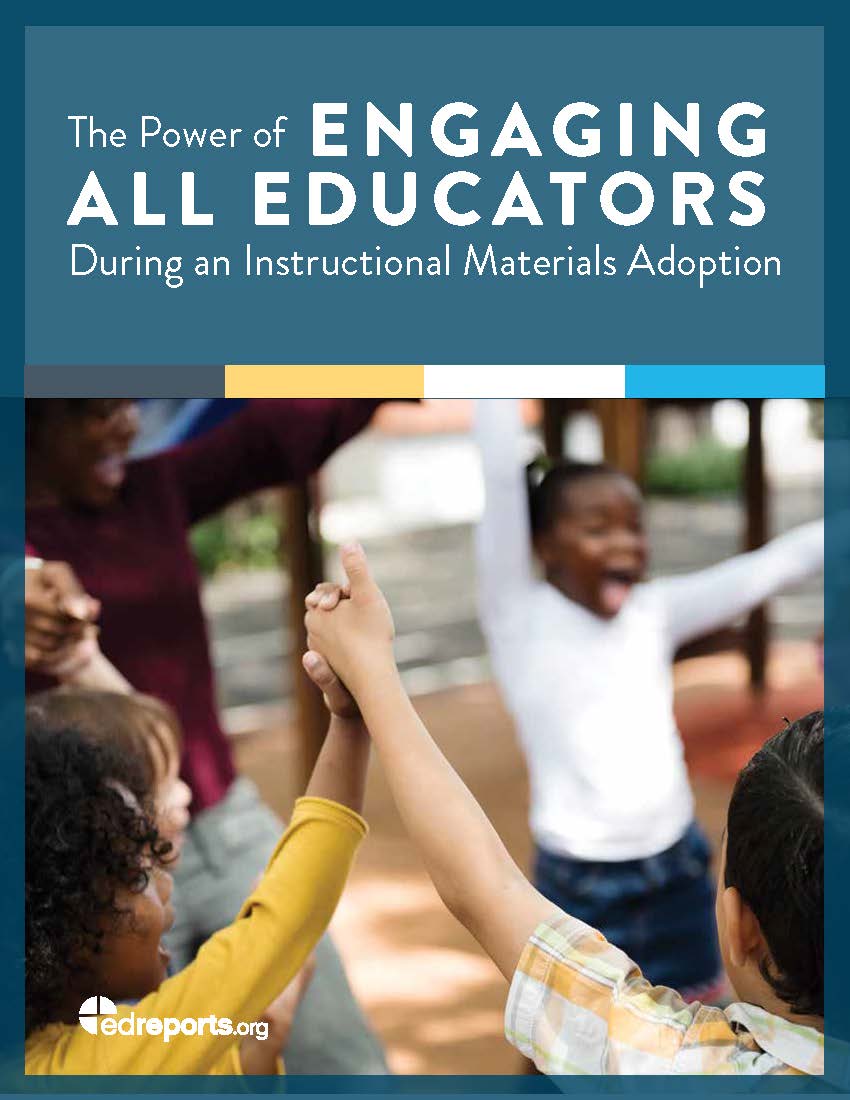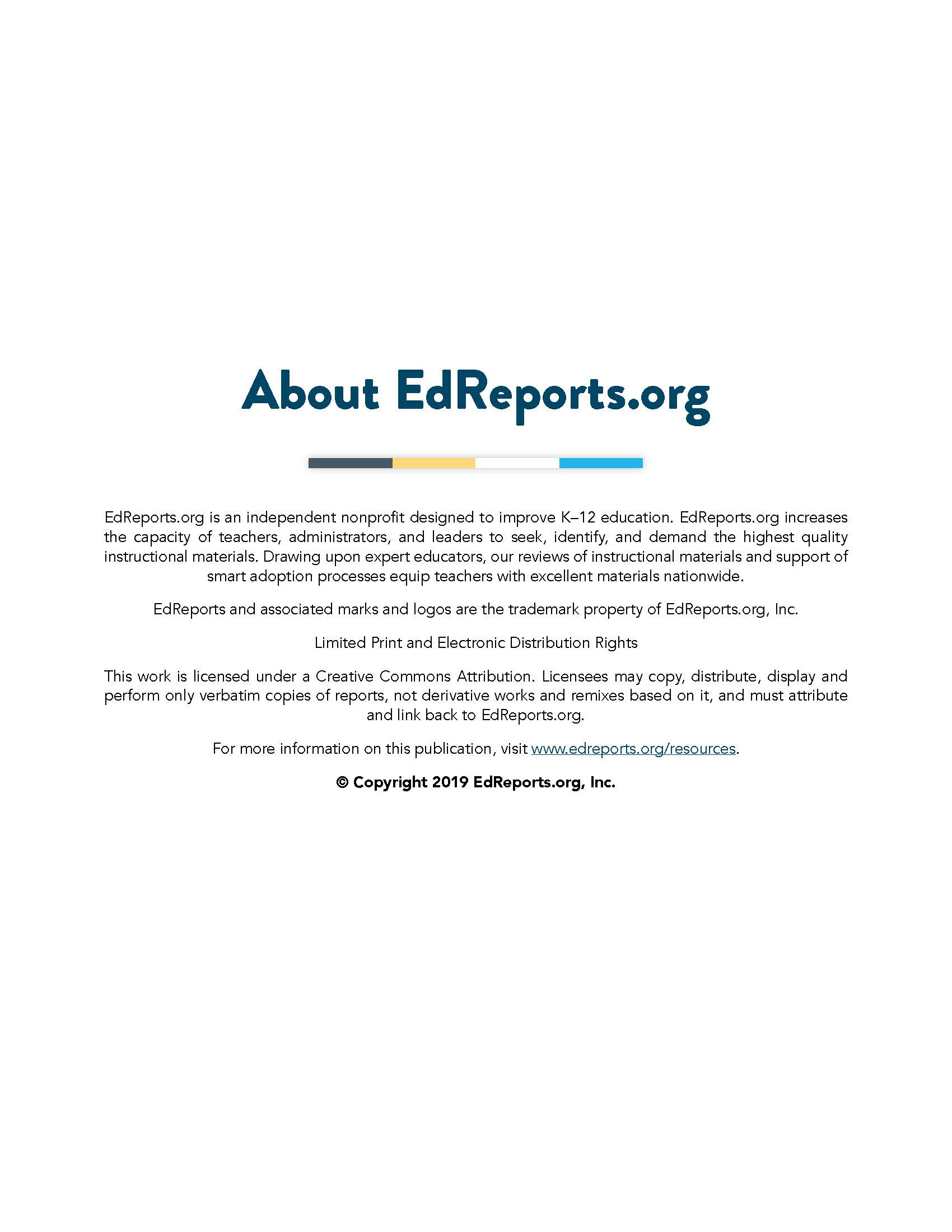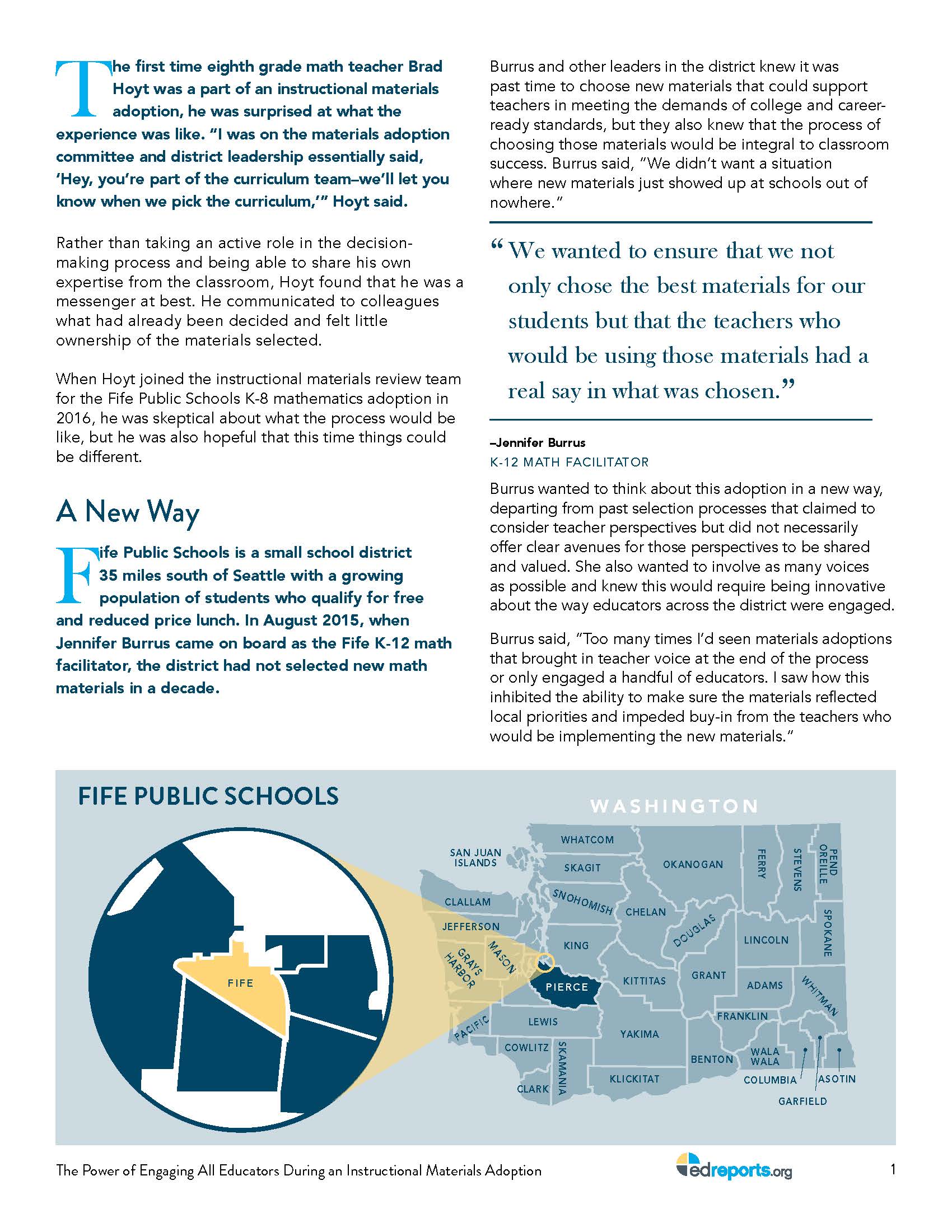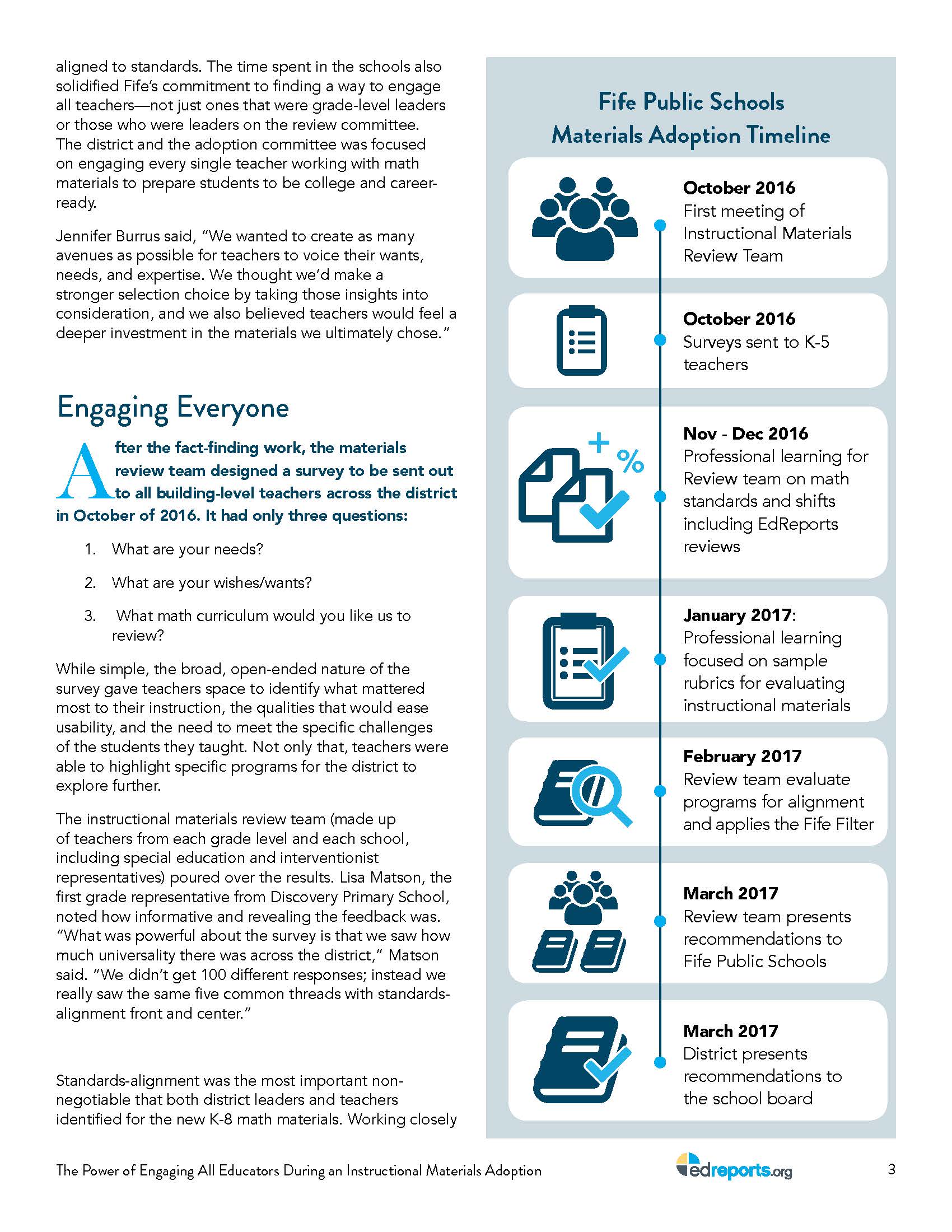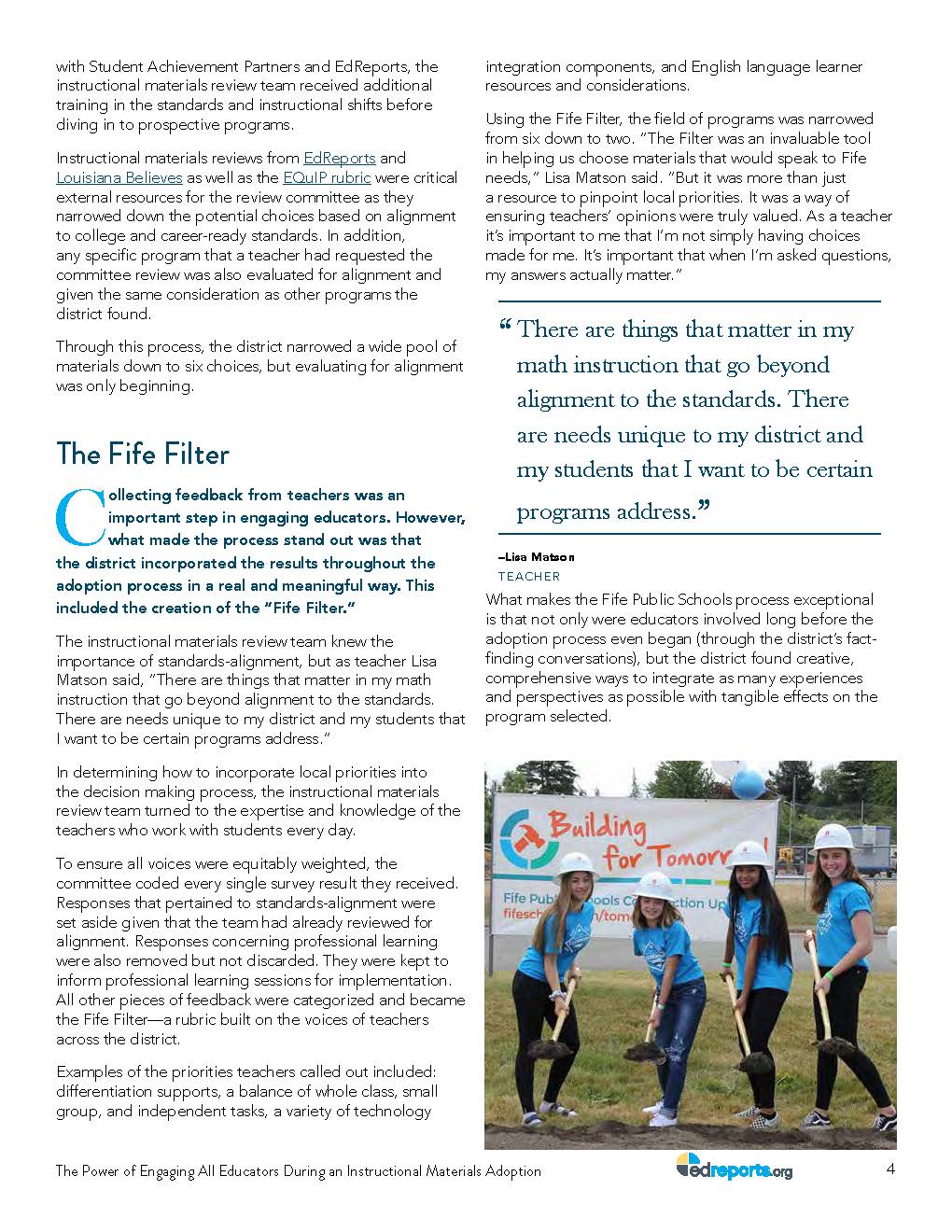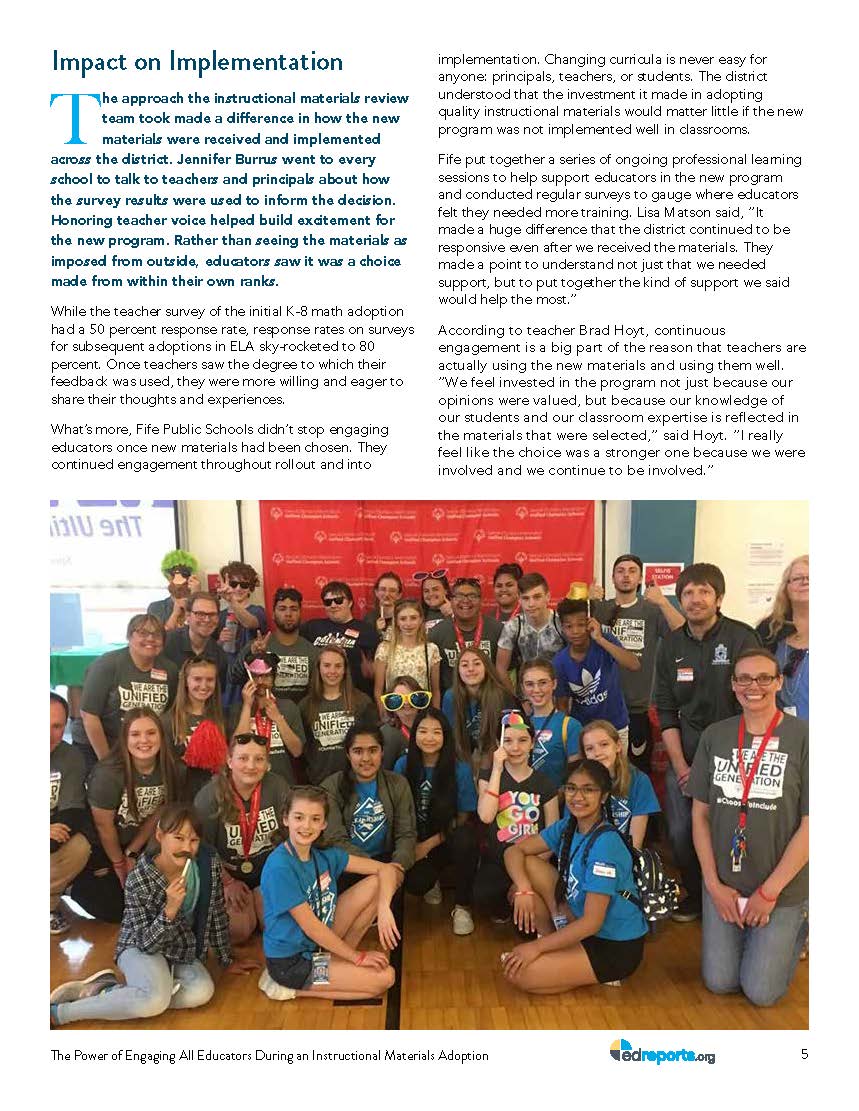Fri Oct 18 00:00:00 UTC 2019
The first time eighth grade math teacher Brad Hoyt was a part of an instructional materials adoption, he was surprised at what the experience was like. “I was on the materials adoption committee and district leadership essentially said, ‘Hey, you’re part of the curriculum team–we’ll let you know when we pick the curriculum,’” Hoyt said.
Rather than taking an active role in the decision-making process and being able to share his own expertise from the classroom, Hoyt found that he was a messenger at best. He communicated to colleagues what had already been decided and felt little ownership of the materials selected.
When Hoyt joined the instructional materials review team for the Fife Public Schools K-8 mathematics adoption in 2016, he was skeptical about what the process would be like, but he was also hopeful that this time things could be different.

Fife Public Schools is a small school district 35 miles south of Seattle with a growing population of students who qualify for free and reduced price lunch. In August 2015, when Jennifer Burrus came on board as the Fife K-12 math facilitator, the district had not selected new math materials in a decade.
Burrus and other leaders in the district knew it was past time to choose new materials that could support teachers in meeting the demands of college and career-ready standards, but they also knew that the process of choosing those materials would be integral to classroom success. Burrus said, “We didn’t want a situation where new materials just showed up at schools out of nowhere. We wanted to ensure that we not only chose the best materials for our students but that the teachers who would be using those materials had a real say in what was chosen.”
"We wanted to ensure that we not only chose the best materials for our students but that the teachers who would be using those materials had a real say in what was chosen.”
Burrus wanted to think about this adoption in a new way, departing from past selection processes that claimed to consider teacher perspectives but did not necessarily offer clear avenues for those perspectives to be shared and valued. She also wanted to involve as many voices as possible and knew this would require being innovative about the way educators across the district were engaged.
Burrus said, “Too many times I’d seen materials adoptions that brought in teacher voice at the end of the process or only engaged a handful of educators. I saw how this inhibited the ability to make sure the materials reflected local priorities and impeded buy-in from the teachers who would be implementing the new materials.”
> Read more about how Fife Public Schools engaged educators in the FULL CASE STUDY

